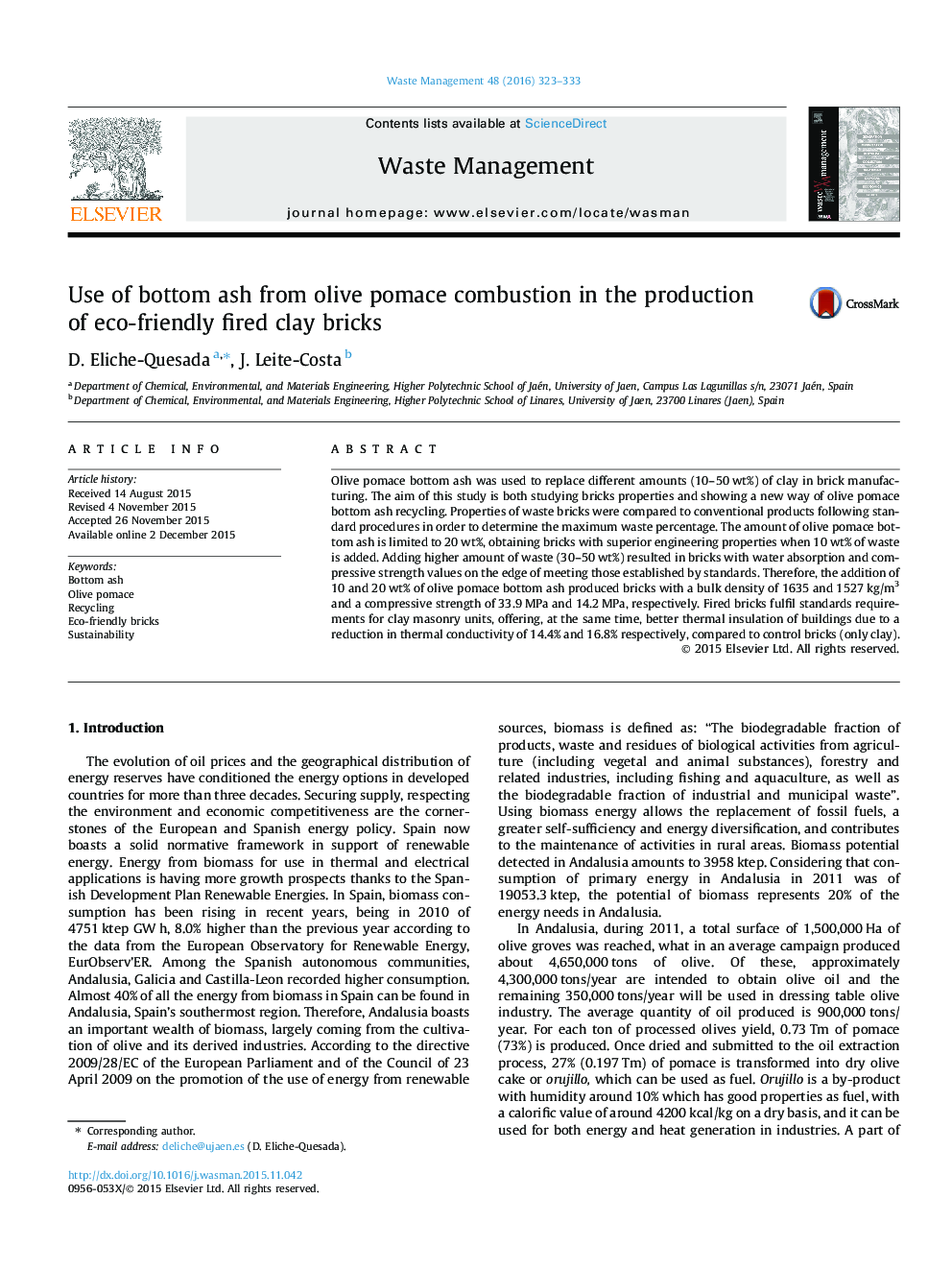| Article ID | Journal | Published Year | Pages | File Type |
|---|---|---|---|---|
| 6354145 | Waste Management | 2016 | 11 Pages |
Abstract
Olive pomace bottom ash was used to replace different amounts (10-50Â wt%) of clay in brick manufacturing. The aim of this study is both studying bricks properties and showing a new way of olive pomace bottom ash recycling. Properties of waste bricks were compared to conventional products following standard procedures in order to determine the maximum waste percentage. The amount of olive pomace bottom ash is limited to 20Â wt%, obtaining bricks with superior engineering properties when 10Â wt% of waste is added. Adding higher amount of waste (30-50Â wt%) resulted in bricks with water absorption and compressive strength values on the edge of meeting those established by standards. Therefore, the addition of 10 and 20Â wt% of olive pomace bottom ash produced bricks with a bulk density of 1635 and 1527Â kg/m3 and a compressive strength of 33.9Â MPa and 14.2Â MPa, respectively. Fired bricks fulfil standards requirements for clay masonry units, offering, at the same time, better thermal insulation of buildings due to a reduction in thermal conductivity of 14.4% and 16.8% respectively, compared to control bricks (only clay).
Related Topics
Physical Sciences and Engineering
Earth and Planetary Sciences
Geotechnical Engineering and Engineering Geology
Authors
D. Eliche-Quesada, J. Leite-Costa,
